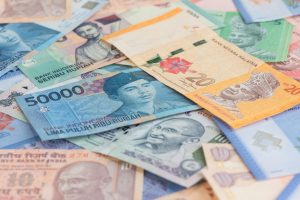The Asian Development Bank has downgraded its forecasts for growth in the region, citing the war in Ukraine, rising interest rates to combat decades-high inflation, and China’s slowing economy.
The Manila, Philippines-based lending agency revised its estimate for growth in developing Asian economies to 4.3 percent, down from an earlier forecast of 5.2 percent. Growth in 2023 was cut to 4.9 percent from 5.3 percent in the revised regional outlook released Wednesday.
ADB economists said that for the first time in three decades, other developing Asian economies would grow faster than China’s.
The updated outlook forecast that the world’s second-largest economy would expand at a 3.3 percent annual pace this year, down from 8.1 percent in 2021 and far below the ADB’s April estimate of a 5.0 percent expansion. The setback represents a long-time slowing of China’s growth coupled with disruptions from outbreaks of COVID-19 and lockdowns and other measures to fight the virus.
India and Maldives were forecast to see the fastest expansions, at 7 percent and 8.2 percent, respectively. In Sri Lanka, where a financial crisis has left the country unable to pay its debts and afford imports, the economy is forecast to contract by 8.8 percent, down from a 3.3 percent pace of growth last year.
The ADB’s forecast for inflation in Asia remains less severe than in the United States and some other economies, at 4.5 percent in 2022 and 4.0 percent next year. But the report put inflation in Sri Lanka at nearly 45 percent this year, while prices were forecast to rise 16 percent in Myanmar and nearly 15 percent in Mongolia.
Inflation has also risen sharply in Laos and in Pakistan, two other countries with economies imperiled by rising debt burdens and weaker growth.
Surging costs for grain and for oil and gas have been the main factors behind price increases, the report showed, noting, “While global food and energy prices have been decreasing recently, it will take time for these declines to translate into lower domestic prices.”
Most Southeast Asian economies are expected to keep up a robust pace of growth as they reopen to tourism and demand recovers. Domestic consumer spending, investment, and remittances from overseas workers also are driving stronger business activity, the report said.
But the demand driving growth remains relatively weak: While exports across the region rose 15 percent from a year earlier in the first half of the year, most of that reflected higher prices, with the real volumes of exports up only 5.2 percent. Exports fell in July and August.
Meanwhile, the pandemic boom in demand for electronics products and their components, as people adjusted to remote work and schooling, has subsided, also slowing export growth.
The silver lining of that moderation in demand was that supply delays and shortages have abated and shipping costs have dropped sharply. By late August, shipping a container from East Asia to the U.S. cost $7,000, down from $16,000 in January.
The report noted that coronavirus vaccination rates across the region, at 73 percent fully vaccinated as of the end of August, were similar to those in the European Union, with only a handful of countries having nearly universal coverage.
Further outbreaks remain a risk for the region, it said. So do developments in Ukraine as governments enforce sanctions against Moscow, such as the EU’s decision to ban seaborne imports of Russian oil by the year’s end.

































